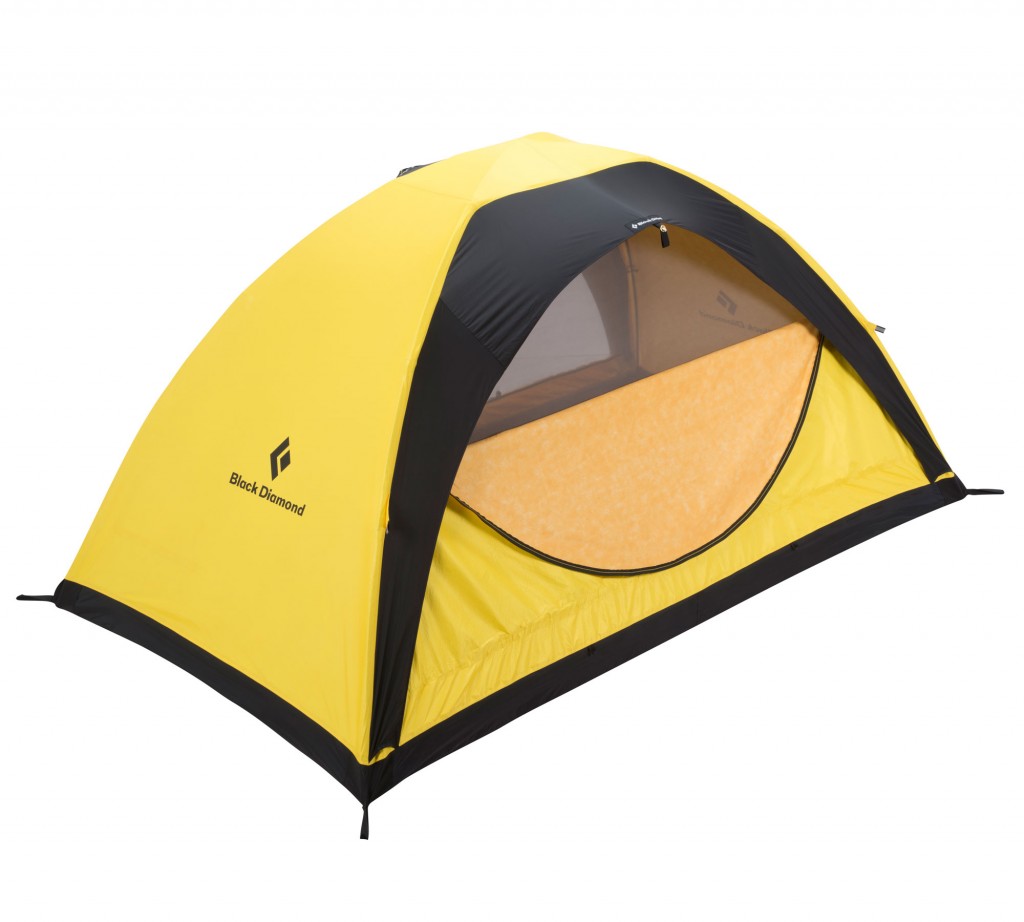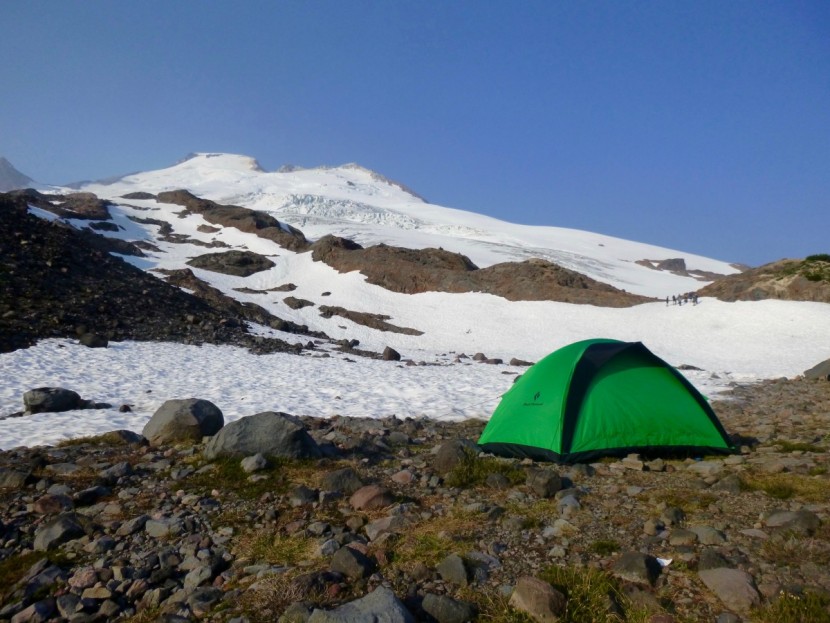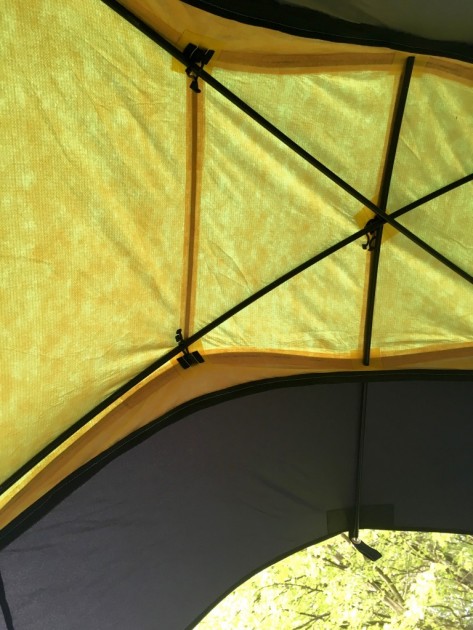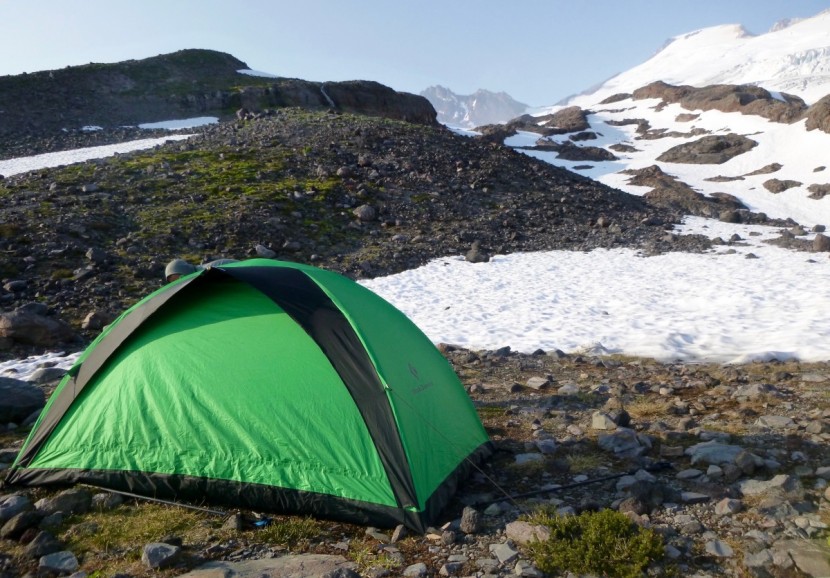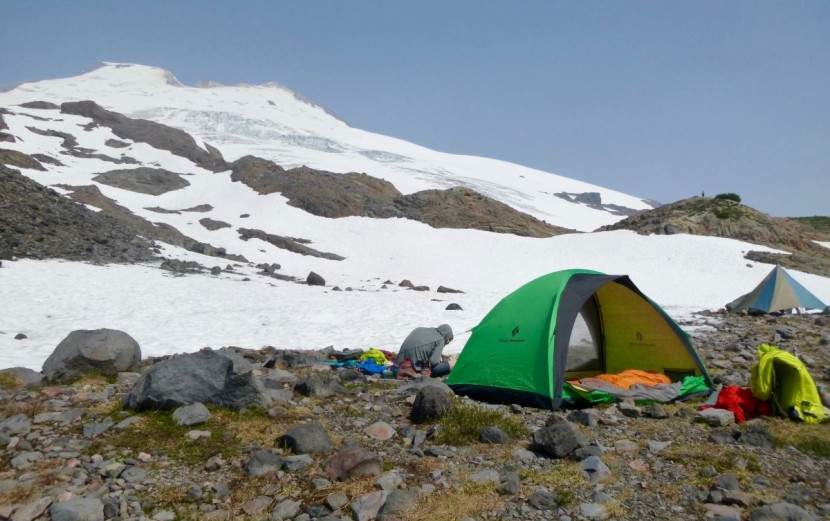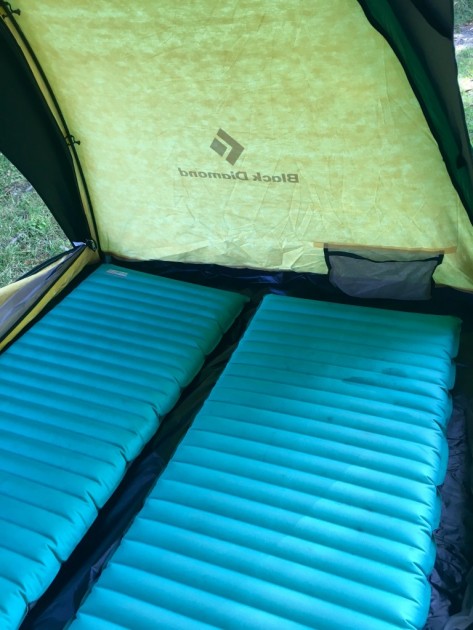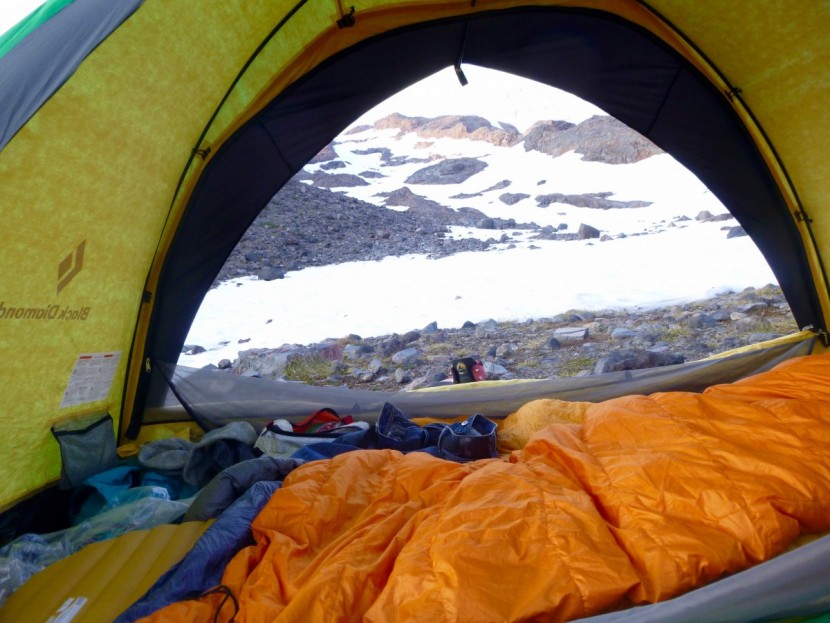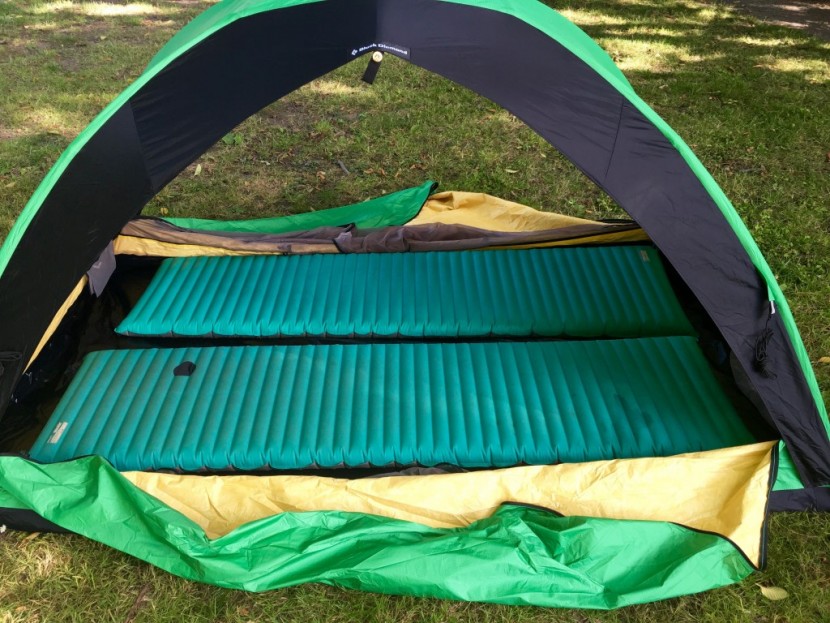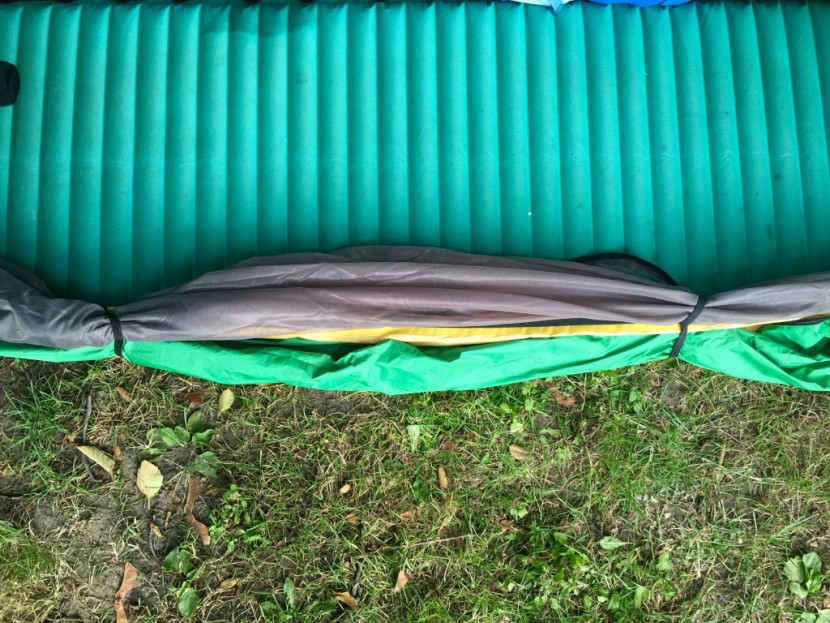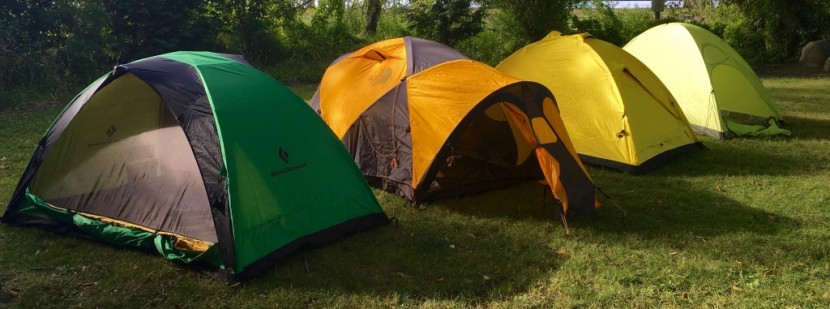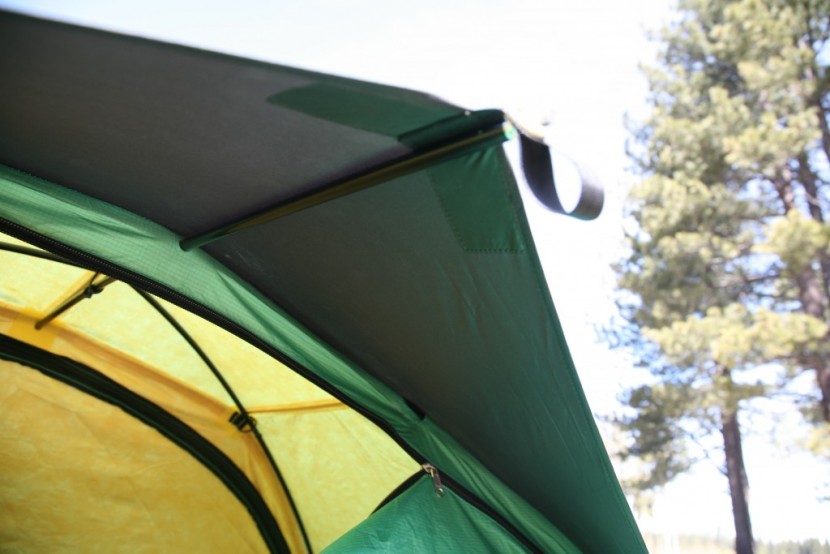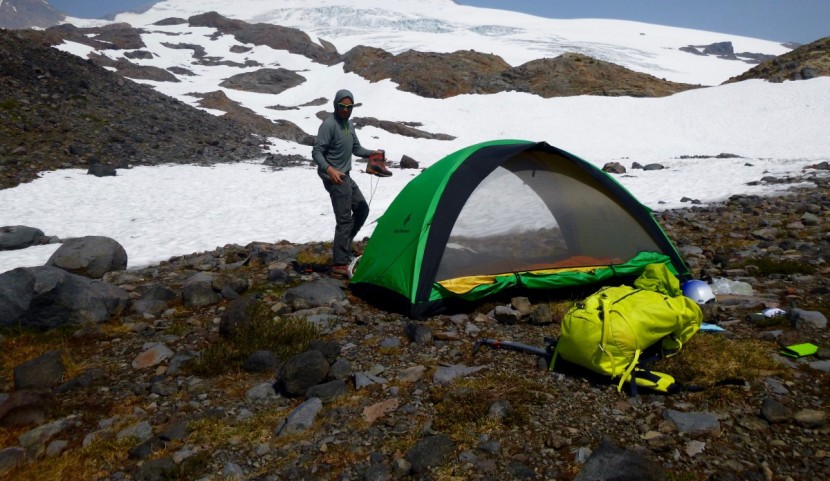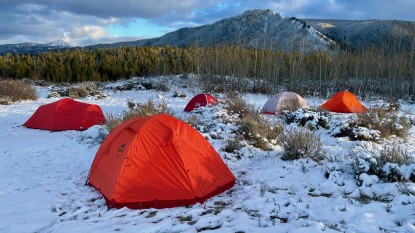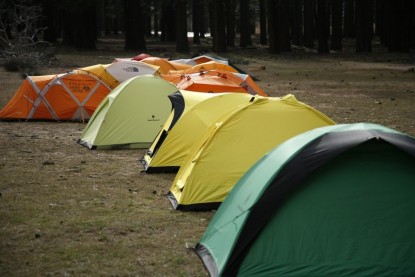Black Diamond Ahwahnee Review
Our Verdict
Our Analysis and Test Results
For years the Ahwahnee was green, but Black Diamond recently changed the color to yellow to make it more in line with the rest of their 4 season tent lineup. While some of our testing photos still feature the green version, rest assured that there is no difference other than color between the green and yellow models.
The Black Diamond Ahwahnee is a versatile single wall model with two gigantic doors which we left open to create unparalleled ventilation, roomy dimensions, and the most breathable exterior fabric of any single wall tent in our review. This shelter blurs the lines between a 3 and 4 season shelter; while it's not the best for the harshest conditions, it performs like a champ for moderate four-season applications as well as lower elevations (AKA warm) and potentially rainy conditions.
Those camping and climbing in places like the Cascades, Sierra, Wind Rivers, Bugaboos, or the Canadian Rockies will appreciate this model because they likely have a lower elevation approach, where bug netting and large dimensions are welcome perks. However, the Ahwahnee is still robust enough for camping above treeline in stormy conditions and can withstand moderate snow loading. It's perfect for someone who wants a spacious single-wall tent to perform well in a broad range of conditions, but who doesn't expect to be in very harsh climates.
Ease of Set-Up
This model is not incredibly easy to set up. Like all of Black Diamond's Bibler series tents, this one pitches from within, and takes a little more getting used to than those that pitch from the outside. This is a design characteristic of all of the Black Diamond/Bibler tents; this isn't a deal-breaker, but know that there is a little bit of a learning curve. However, with anything, practice makes perfect.
With this contender, you have to get inside the tent or pull one corner over yourself to set it up. Another small complaint which was voiced by all testers was the small and slightly flimsy plastic twist-tie style pole clips.
The advantage of the internal pitch is its strength and relatively low weight. The pitch is drum-tight, and thus, the pole is continuously supported by the body of the tent. Since there are no pole sleeves and the plastic twist ties are lighter than pole clips or pole sleeves, it shaves off a little bit of weight.
There are many advantages to an external pitch: the inside is less likely to get wet (because the doors basically have to be open while you set it up), lower chance of accidentally sending a pole through the floor or wall, and ease of set-up crawling inside to fasten clips is no-doubt slightly slower than standing up outside.
Weather Resistance
The Ahwahnee did a great job of keeping its occupants dry, even after six days straight of pouring rain. It performs notably better than all other single wall tents in these conditions. It also handles moderate snow loading; even with its cross poled-design, it handled over a foot of new snow falling on it, with only minimal sagging - conditions that several other models didn't fare as well in.
What kept it from scoring higher is its so-so performance in strong winds. The Ahwahnee's pole design, which gives it above average adaptability, livability, and versatility, presents its greatest disadvantage in severe winds. If oriented incorrectly to the direction of the wind, the cross pole that creates the awnings will collect wind like spinnakers.
The Ahwahnee is ideal for lower-48 and Southern Canada style four-season use rather than Alaska Range or Antarctic type adventures. One disadvantage is if you are forced to close the doors 100% because the wind is blowing whatever form of precipitation strongly, there are no additional vents. Unzipping the tops of the doors is the only way to manage condensation aside from the breathability of the fabric.
Luckily, the ToddTex fabric makes this semi-successful, as it handles moisture and condensation as well as any single wall tent out there. Even in fairly stormy conditions, we could still leave the top of the doors open.
Livability
Of all the tents reviewed here, the Ahwahnee has the most headroom. Two six-foot (or taller) people can sit up, face each other (such as playing cards or chess), and hang out easily. The tent has two poles that cross corner-to-corner, crossing once in the center. A third half-length pole supports two awnings that provide cover for ventilation in foul weather. The interior floor is 33 sq ft and provides more than adequate space for two (even two tall 6'4"+ people fit great). Two large half-moon shaped doors give each person their own entrance.
The greatest selling point besides its tremendous versatility is that it is just plain comfortable to hang out in, especially considering it's a single wall tent. The level of comfort becomes exponential as its occupants get taller. Sure it's nice to have space if you're 5'9," but for those 6 feet or taller, few single wall tents can compare with the livability of this one.
Every tester who used the Ahwahnee absolutely loved the giant doors; they are easy to enter and exit, provide lots of fresh air, and make fantastic windows. However, because the door flaps end up on the ground, we had to take care not to get mud and snow on them when we entered and exited the tent.
Durability
The ToddTex fabric means that this tent is one of the tougher models out there; the fabric will last for many years and will likely outlive many other single wall tents. We have found that ToddTex is more resistant to solar degradation and holds its water-resistance longer than other single-wall tent fabrics. While it doesn't relate directly to durability, we'd note again that care should be taken with the poles to make sure you don't stab a hole in the floor. It's easy to avoid and easy to patch if you truly blow it, but it is worth noting.
Weight
The Ahwahnee weighs six pounds 15 ounces and is heavier than all of the other single wall tents, as well as a handful of some of the double-wall tents. It is 1-2 pounds lighter than many other 4 season tents that work comparably as well in 3 season conditions.
Versatility
Along with comfort and livability, versatility is one of the Ahwahnee's best attributes. It performs better in three-season conditions and mild four-season conditions than it does on burly four-season expeditions in remote ranges. This is okay because, in reality, 3-season and mild 4-season travel are where the majority of users are going to take it.
We love this tent for alpine climbing in places like the Cascades, Sierra, Bugaboos, or Tetons. We've even taken this tent kayak camping and pure 3-season backpacking and were quite happy with it. We wouldn't want to take it on a trip up to Denali, Antarctica, or as a base camp tent in an area where we knew it was going to get pounded.
The Ahwahnee's ToddTex ePTFE shell material handles moisture and condensation far better than any other single wall tent in our review. ToddTex is covered with tiny hairs on the insid and do a fantastic job of encouraging moisture to “wick” through the tent. This model also offers solid ventilation abilities as long as it's not too windy. We mentioned how both of its doors unzip all the way for fantastic ventilation during fair weather, but even if it's raining, the Ahwahnee features a short third pole that creates two awnings at the tops of the doors; this allows them to be left partially open, which helps moisture circulate. If you buy the vestibule, you can leave the vestibule side interior door open for fantastic ventilation.
The Ahwahnee is an excellent option for summertime mountaineering adventures where you might have a lower elevation approach. This is when the huge mesh windows will be an advantage. In places like the Cascades or the Wind River range, you might spend one or more days on a warm and buggy approach hike before getting above treeline. This option lets you stay cool at night while still keeping the critters out.
Value
The Ahwahnee is expensive. With that in mind, it still brings a solid value to the table. It offers some of the highest versatility across weather conditions and is the best for three-season applications. It's a comfortable single wall model, with a large floor space and high ceiling. It is durable and will last most people many years of use.
Conclusion
The Black Diamond Ahwahnee is designed to be a versatile year-round tent for everything from spring backpacking to summer alpine climbing to winter mountaineering. It's not the best option for heavy-duty four-season use or base camping in a harsh alpine environment. It's also a little heavy for use as a bivy tent. It is a decent option for places like the Cascades, Sierra, and Tetons, where you could encounter any conditions from cold fronts to rainstorms to bluebird skies.


